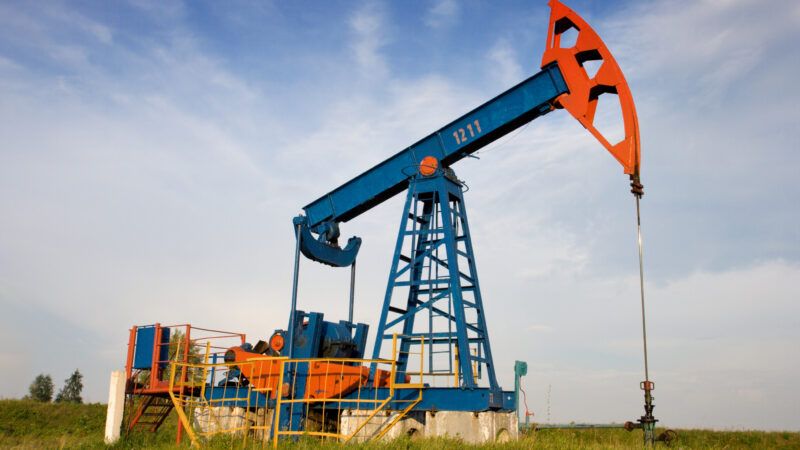Trump's Tariffs on Steel and Aluminum Are Bad News for American Energy
"This really is one of the dumbest things we could be doing."

After temporarily pausing tariffs on certain Mexican and Canadian products last week, President Donald Trump is going back to the well of protectionism. On Monday, he announced a global 25 percent tariff on steel and aluminum imports. "No exceptions" for these will be given to countries, according to Trump.
The U.S. is the second-largest steel importer in the world, according to the International Trade Administration. In 2023, the U.S. imported 25.6 million metric tons of steel and exported a little more than 8.2 million metric tons. About half of the aluminum used domestically is imported and by global standards, the U.S. has a very small aluminum smelting industry. Steel and aluminum imports to the U.S. were valued at nearly $50 billion in 2024, per Bloomberg.
Taxes on imports of these materials will not only hurt the economies of other nations, including Canada—which is the No. 1 provider of steel and aluminum imports to the U.S.—Brazil, and Mexico, but they will also have a demonstrable impact on several sectors of America's economy, including energy.
Steel—whose prices could increase by "$100 to $150 a short ton" because of the tariffs, according to an analysis from Citi Bank—and aluminum are used in everything from fossil fuels to green energy. Steel makes up 66 percent to 79 percent of a wind turbine's mass and the World Bank estimates aluminum accounts for more than 85 percent of most solar energy components, including panels and racking.
Carbon steel forges, meanwhile, are commonly used in oil and gas pipelines because they can withstand high temperatures and pressure levels. They are also corrosion-resistant, which makes them essential to offshore drilling operations. Aluminum, which has an optimal strength-to-weight ratio, is also used for tubular products on oil and gas rigs.
Nuclear power plants are built primarily with concrete and steel. Vogtle Unit 4, which is the most recent nuclear power plant to be built in the U.S., required 330,000 pounds of stainless steel to build its reactor core cooling system. Canada was America's largest supplier of "long products," which include stainless steel, in 2023.
Imposing levies on steel and aluminum will increase costs for domestic energy projects (which will be passed on to consumers) while hamstringing America's energy dominance. In recent years, high material costs (and burdensome regulations) have led to cancellations or price tag hikes for offshore wind energy, advanced nuclear power, and transmission line projects. Instead of building oil pipelines to the U.S., these trade barriers could also incentivize Canadian energy companies to invest in other markets, such as Japan, says Wayne Winegarden, an economist at the Pacific Research Institute, a free market think tank. "This really is one of the dumbest things we could be doing," Winegarden tells Reason.
Importantly, these tariffs won't accomplish Trump's stated goal of "making America rich again."
A study from the International Trade Commission found tariffs on steel (25 percent) and aluminum (10 percent) implemented during the first Trump administration decreased production and increased costs in downstream industries that use these materials by 0.6 percent and 0.2 percent, respectively. Total production in downstream industries was $3.5 billion less in 2021 because of these tariffs. The Tax Foundation estimates that repealing tariffs and their quotas would increase long-run gross domestic product by $3.5 billion and create thousands of jobs.
There's no telling if the tariffs will stick or be paused. However, trade wars, even the ones that never happen, hurt consumers, businesses, and America's standing in a globalized world.


Show Comments (43)